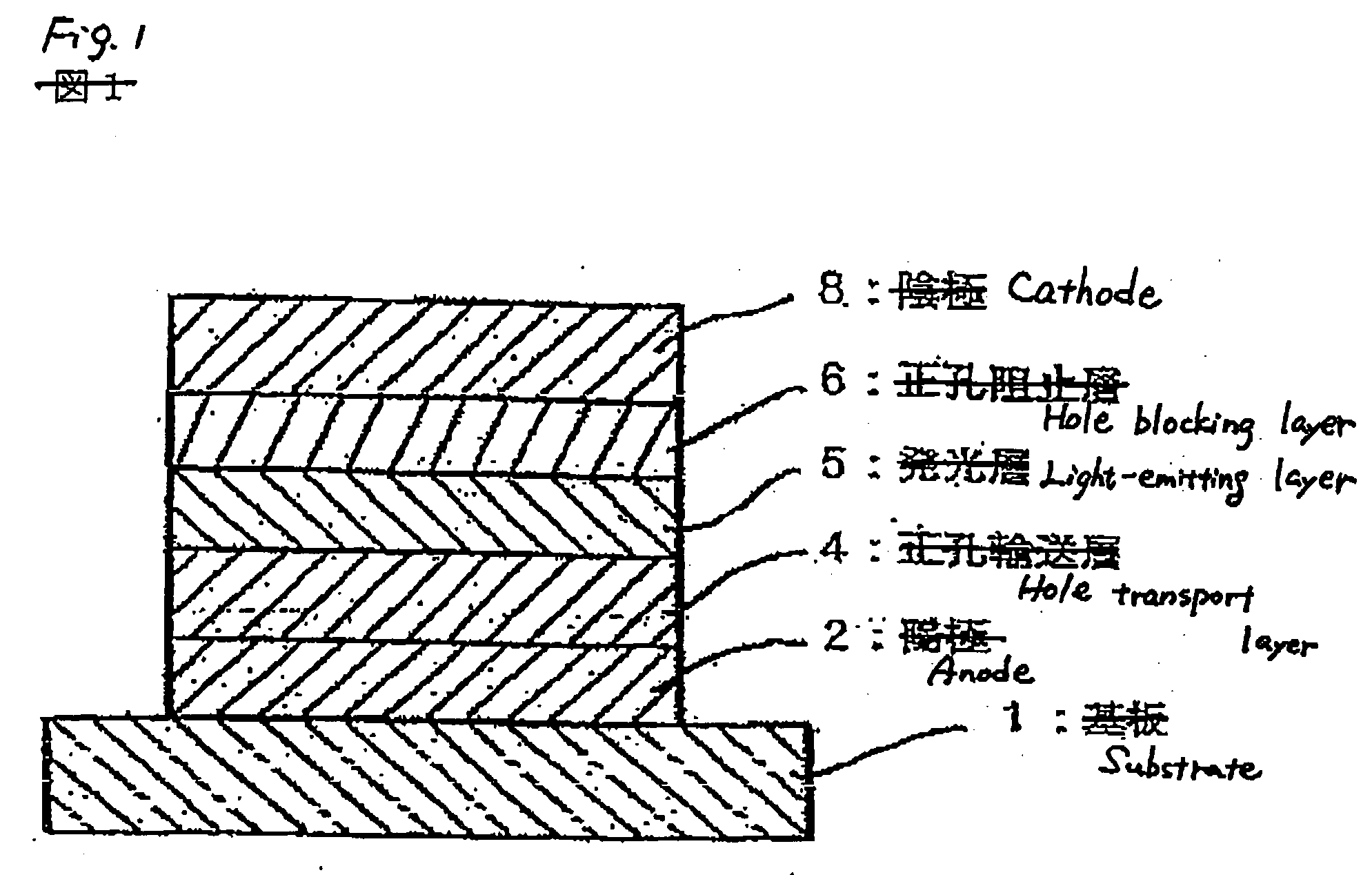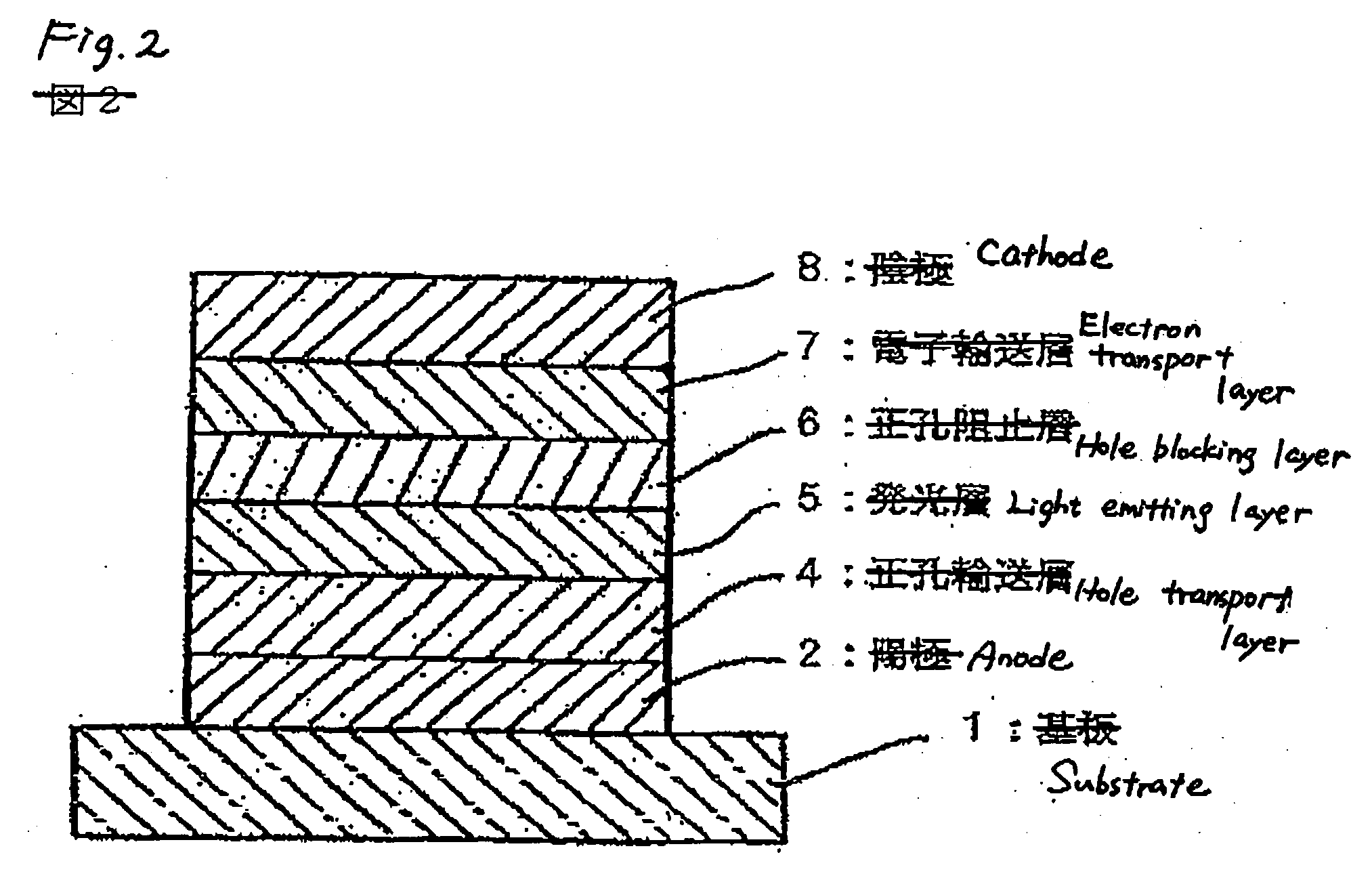Compound, charge transporting material and organic electroluminescent element
- Summary
- Abstract
- Description
- Claims
- Application Information
AI Technical Summary
Benefits of technology
Problems solved by technology
Method used
Image
Examples
synthesis examples
[0354] Synthesis examples of compounds of the invention and compounds to be used as charge transporting materials of the invention are shown below as Synthesis Examples 1 to 26. The glass transition temperature was determined by DSC measurement, the gasification temperature was determined by Tg-DTA measurement, and the melting point was determined by DSC measurement or Tg-DTA measurement.
synthesis example 1
End Product 1 to End Product 2
[0355]
[0356] Sulfuric acid (8.0 ml) was added to a mixture of isophthalaldehyde (2.7 g), acetophenone (9.6 g) and acetic acid (57 ml) in the atmosphere at room temperature, followed by stirring at room temperature for 6 hours. After adding methanol (50 ml) to the thus-obtained solution and stirring, a precipitate was collected by filtration and washed with methanol to obtain end product 1 (2.6 g).
[0357] End product 1 (2.6 g), 1-phenacylpyridinium bromide (6.3 g), ammonium acetate (29 g), acetic acid (130 ml) and N,N-dimethylformamide (130 ml) were stirred in a nitrogen stream for 8.5 hours while heating under reflux, and water (80 ml) and methanol (80 ml} were added to the thus-obtained solution, followed by stirring. The precipitate formed was collected by filtration and, after washing with methanol, the filtrate was recrystallized from toluene-ethanol to purify. Thus, end product 2 (1.7 g) was obtained. The product was identified as end product 2 t...
synthesis example 2
End products 3 and 4
[0360]
[0361] To a mixture of 1,3-diacetylbenzene (3.2 g), benzaldehyde (9.6 g) and acetic acid (57 ml) was added concentrated sulfuric acid (8.0 ml) in the atmosphere, and the mixture was stirred for 7 hours at room temperature. Water (10 ml) and methanol (50 ml) were added to the thus-obtained solution and, after stirring, a precipitate was collected by filtration and washed with methanol to obtain an end product 3 (6.0 g).
[0362] End product 3 (3.4 g), 1-phenacylpyridinium bromide (8.3 g), ammonium acetate (39 g), acetic acid (150 ml) and N,N-dimethylformamide (150 ml) were stirred in a nitrogen stream for 5.7 hours while heating under reflux, and water (200 ml) and methanol (100 ml) were added to the thus-obtained solution, followed by stirring. A precipitate formed was collected by filtration and, after washing with methanol, the filtrate was recrystallized from toluene-ethanol to purify. Thus, end product 4 (3.9 g) was obtained. The product was identified ...
PUM
| Property | Measurement | Unit |
|---|---|---|
| Electric potential / voltage | aaaaa | aaaaa |
| Electric potential / voltage | aaaaa | aaaaa |
| Electric potential / voltage | aaaaa | aaaaa |
Abstract
Description
Claims
Application Information
 Login to View More
Login to View More - R&D
- Intellectual Property
- Life Sciences
- Materials
- Tech Scout
- Unparalleled Data Quality
- Higher Quality Content
- 60% Fewer Hallucinations
Browse by: Latest US Patents, China's latest patents, Technical Efficacy Thesaurus, Application Domain, Technology Topic, Popular Technical Reports.
© 2025 PatSnap. All rights reserved.Legal|Privacy policy|Modern Slavery Act Transparency Statement|Sitemap|About US| Contact US: help@patsnap.com



